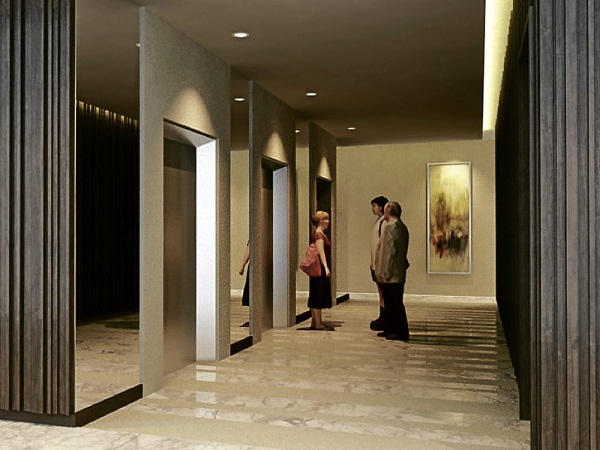Things to consider when selecting a property

IN BUILDINGS, see to it that there are sufficient elevators and that that you don’t wait forever for a ride, especially during the peak hours.
Moving to a new house, condo, office space, or purchasing a lot to build on is considered a milestone event. When you move to a new place, the patterns you are comfortable with change: familiar faces fade away: visual landmarks shift; and daily routines are altered. As such, the change brings lots of excitement, but with it, lots of stress and anxiety too! More than the change itself, the physical and financial preparation needed for such a move can take so much out of you. It truly is one of the most stressful events in life.
One easy way to reduce the stress and the anxieties is to do your due diligence. People, who are not in the business of buying or selling property or are not in the related technical fields, not knowing what to look for or consider, can make the process daunting. The worst is the feeling of uncertainty as to whether it is really the space that will work for you or not—or whether it will cost you an arm and a leg to make it do so. And the even bigger question is: Is it a worthy investment? To avert those anxieties, there are a few things to investigate when considering to buy or lease.
• Firstly, look into the terms of lease or ownership, deed restrictions, and the design and construction guidelines as these will determine whether your selection will actually accommodate your needs. It even helps to engage a design professional to do a preliminary study on the feasibility of the property.
• Check on the longevity and integrity of the building management or association. Are they indebted? Do they have a good pot of savings set aside to use for the larger and more expensive long-term improvements? Are they fraught with squabbling directors or owners? Are they strict in imposing lease and construction restrictions? The value of a property will eventually increase or decline depending on how well the quality of its environment is maintained.
• Investigate utility line provisions. Is there an available power line to tap into? Is the power load provision commensurate to the amount of power you will need? As an example, some of the older office spaces are not designed to house BPOs which are dense, with a large number of people per square meter of space, translating to more equipment and more power use. They will likely require an upgrade of the power feeder lines (if the building can even bring it in) in order to accommodate their requirements. More work, more cost.
Article continues after this advertisement• Other utility concerns relate to the type of air-conditioning system provided and if it works with your lifestyle or operation. Also check whether there has been sufficient space provided to locate both indoor and outdoor units in terms of both floor space and ceiling heights. There likely will be, but will you be happy with the parameters you have to work with? Possibly low ceilings and oddly located air conditioners? Or worse yet, an expensive system which is solely what the building can accommodate?
Article continues after this advertisementIn office buildings, plumbing lines are usually provided for an executive toilet and pantry, but is this tapping point located in the area where you need them? In most buildings, you can’t relocate them. Is there sufficient water pressure for the lot, townhouse or condo unit you want to buy, even when all the units have already been occupied? Does the property development support your commitment to being sustainable and provide you with opportunities for using gray water or harvesting and storing rain?
• Consider other provisions too. Are the roads wide enough to allow a free flow of traffic for when the area is well lived in? Does the development require a good number of car parks to be provided per household so that cars do not park along the streets at night (or even during the day!)? Similar concerns with buildings: Are there sufficient elevators so that you don’t wait forever for a ride, especially during peak hours? Are the basement car parks well lit? Are the ramps comfortably maneuverable?
I could go on and on, and maybe I should have written a checklist. But I hope these snippets can help you in cutting down what could be expensive or disastrous surprises. Don’t jump the gun. Do your homework.
Contact the author through [email protected] or through our Asuncion Berenguer Facebook account.